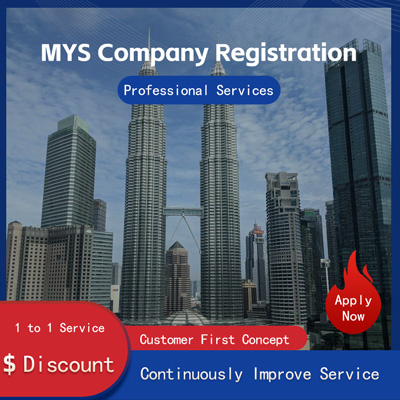
How to Optimize the Loading Speed of Shopify Pages?
How to Optimize Slow Page Loading Speed on Shopify
In the field of e-commerce, Shopify is favored by many merchants due to its ease of use and powerful functions. However, with the growth of traffic and users' increasing demands for website experience, page loading speed has become one of the key factors affecting user experience. Recent relevant data shows that more than 47% of consumers expect web pages to load within two seconds, while if the loading time exceeds three seconds, about 53% of visitors will leave the site. For Shopify merchants, optimizing page loading speed is not only a technical challenge but also an important strategy to enhance customer satisfaction and conversion rates.

Firstly, reducing HTTP requests is the fundamental step in improving page loading speed. Each web element such as images or script files requires a separate HTTP request to be loaded into the browser. Too many requests can overload the server, prolonging the overall loading time. To address this issue, merchants can merge CSS and JavaScript files to reduce the number of requests; at the same time, compressing code can reduce file size, which not only accelerates transmission speed but also saves bandwidth costs. For example, some successful cases show that merging multiple small images into one large image and controlling the display area through CSS, known as the sprite technique, can significantly reduce the number of image requests on the page.
Secondly, optimizing image quality should not be overlooked. High-quality product images are certainly important, but excessively large file sizes can directly impact loading efficiency. It is recommended that merchants save images with appropriate resolution and format, such as JPEG for photo-like images and PNG for design elements with transparent backgrounds. Modern browsers generally support the WebP format, which has a higher compression ratio compared to traditional formats, maintaining good image quality while significantly reducing file size. To further optimize, merchants can take advantage of Shopify's automatic image resizing feature to ensure users on different devices receive the best visual effects.
Thirdly, enabling browser caching mechanisms can improve the loading experience for returning visitors. When users first visit the site, all necessary resources are downloaded and stored locally in the cache. The next time the user browses the same page, they only need to read the cached resources instead of downloading them again, greatly reducing data transmission and improving subsequent access speed. To achieve this, merchants need to configure correct HTTP header information, clearly specifying which resources can be cached and the validity period of the cache. It is worth noting that reasonably setting caching strategies not only speeds up page loading but also effectively reduces server pressure, achieving a win-win result.
Additionally, choosing the right hosting service provider is equally crucial. Although Shopify itself provides a stable and reliable platform, the actual operating environment still depends on the performance of the backend servers. It is recommended that merchants select reputable service providers with strong technical capabilities, such as those with commitments to high availability, quick response, and regular maintenance by professional teams. Regularly checking server logs, promptly identifying potential issues, and taking corresponding measures, such as upgrading hardware configurations or migrating to more efficient architecture solutions, are all worth considering.
Finally, continuous monitoring and analysis of performance metrics can help merchants better understand their current situation and develop improvement plans. Using Shopify's built-in analytics tools or third-party monitoring platforms, merchants can track page loading times, bounce rates, and other data in real-time, thereby identifying bottlenecks. For instance, a certain e-commerce platform found through Google Analytics tracking tools that the slow loading speed of product detail pages was mainly due to a large number of nested third-party plugins. After careful investigation, unnecessary plugins were removed and related logic was restructured, ultimately reducing the average loading time by nearly 30%, significantly enhancing user experience.
In summary, slow page loading speed on Shopify is not an unsolvable problem but requires comprehensive optimization from multiple aspects. Whether it is reducing HTTP requests, optimizing image quality, enabling browser caching, or choosing a quality hosting service provider, each step is crucial. Only through continuous testing, adjustment, and improvement can we truly achieve an ideal state that is both fast and stable, providing customers with an excellent online shopping experience.
Still have questions after reading? More than 98,000 users have contacted us. Please fill in the following information to obtain business information.

Service Scope
MoreRecommended for You
- Overseas Influencer Blacklist Lookup Guide 2 Tools to Help You Avoid Risks
- What Is TK123? The Must-Have Tool for TikTok Sellers
- How to Use Facebook Dynamic Ads Campaigns? A Guide to Creating Dynamic Ads
- CIMB Bank Account Opening Guide
- Optimizing Sales Strategies for the Back-to-School Season in Overseas Student Markets
- Japan E-commerce Market Analysis and Keyword Research Tool Recommendations
- What Is the Amazon High Return Rate Tag? How to Avoid Being Tagged?
- Amazon Marketing Platform Levanta Analysis
- Amazon Low-Price Store Product Search Guide
- A Comparative Analysis of KOLs and KOCs in Overseas Influencer Marketing
- How Can MercadoLibre Sellers Achieve Explosive Sales Growth?
- Top 10 eBay Data Analysis Tools Recommended
- Common Japanese Search Engines Abbreviated List
- Ozon Russia E-commerce Platform Entry Requirements Analysis
- How to Run Google Shopping Ads for Independent Websites? Detailed Step-by-Step Analysis
- The TM Mark™ is a Trademark Indicator.
- SF Express International Business Overview
- The Future of Amazon Prime Day 2025 Amazon Sale Event Dates
- Italy VAT Guarantee New Policies and Payment Methods
- Recommended Payment Methods for Cross-Border E-Commerce in Russia


 ONE
ONE








Customer Reviews
Small *** Table
December 12, 2024The experience was very good. I was still struggling to compare it with other companies. I went to the site a few days ago and wanted to implement it as soon as possible. I didn't expect that everything exceeded my expectations. The company is very large, with several hundred square meters. The employees are also dedicated and responsible. There is also a wall of certificates. I placed an order on the spot. It turned out that I did not make a wrong choice. The company's service attitude is very good and professional. The person who contacted me explained various things in detail in advance. After placing the order, the follow-up was also very timely, and they took the initiative to report the progress to me. In short, I am very satisfied and recommend this company!
Lin *** e
December 18, 2024When I first consulted customer service, they recommended an agent to me. They were very professional and patient and provided excellent service. They answered my questions as they came in. This 2-to-1 service model is very thoughtful. I had a lot of questions that I didn’t understand, and it’s not easy to register a company in Hong Kong. Fortunately, I have you.
t *** 7
December 19, 2024I originally thought that they only did mainland business, but I didn’t expect that they had been doing Hong Kong business and were doing very well. After the on-site interview, I decided to ask them to arrange the registration of my Hong Kong company. They helped me complete it very quickly and provided all the necessary information. The efficiency was awesome. It turns out that professional things should be done by professionals.👍
b *** 5
December 16, 2024In order to register a company in Hong Kong, I compared many platforms and stores and finally chose this store. The merchant said that they have been operating offline for more than 10 years and are indeed an old team of corporate services. The efficiency is first-class, and the customer service is also very professional.